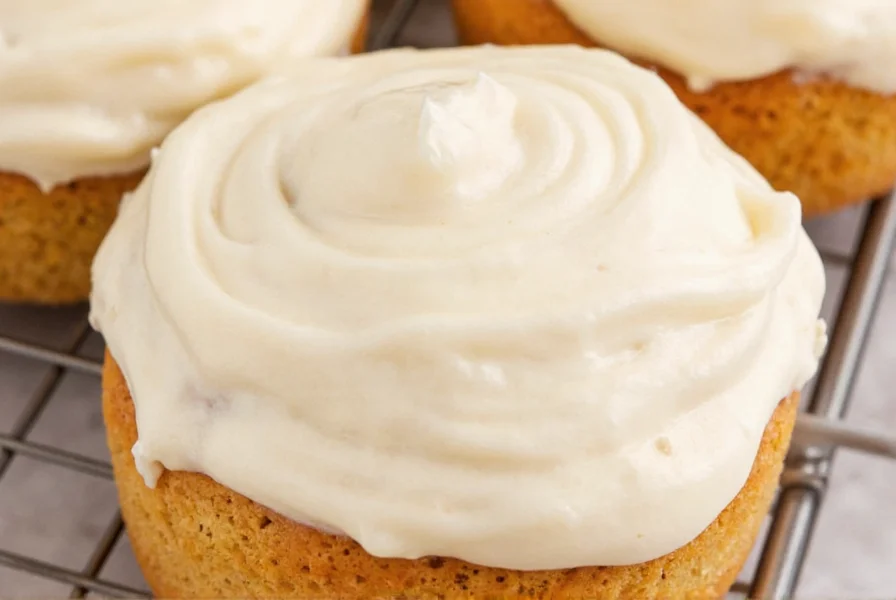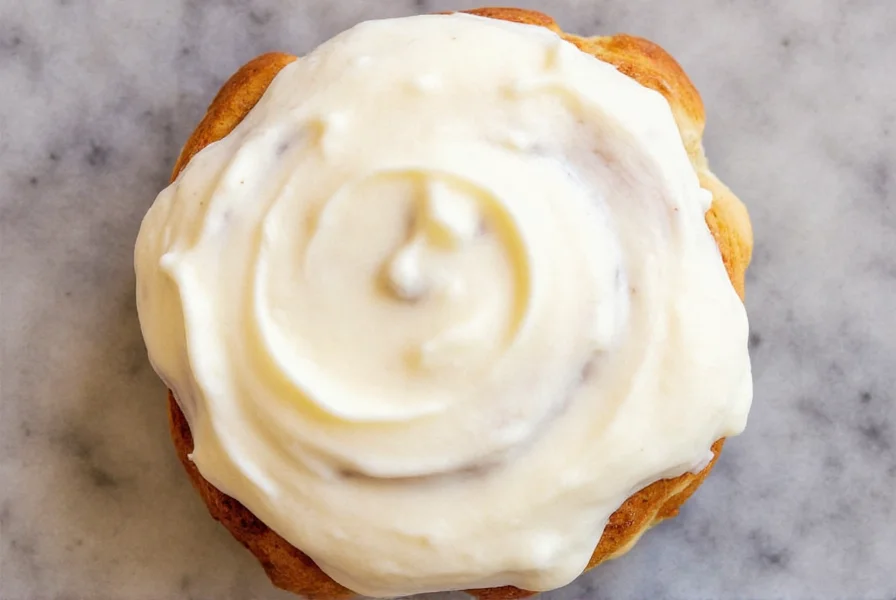When it comes to finishing freshly baked cinnamon rolls, the right frosting can transform a good pastry into an extraordinary treat. Understanding which frosting complements cinnamon rolls best requires considering flavor balance, texture, and application timing. This guide explores the top frosting options, complete with recipes and professional tips to achieve bakery-quality results at home.
Why Cream Cheese Frosting Reigns Supreme
Cream cheese frosting remains the most popular choice for cinnamon rolls for compelling reasons. Its slightly tangy profile cuts through the intense sweetness of the rolls, creating a perfect flavor harmony. The rich, velvety texture clings beautifully to the swirls without overwhelming the delicate pastry structure.
Professional bakers consistently choose cream cheese frosting for cinnamon rolls because it maintains its integrity at room temperature while still melting luxuriously in your mouth. Unlike thinner glazes, it provides that signature thick, luscious coating that defines premium cinnamon rolls.
Top Frosting Options Compared
| Frosting Type | Flavor Profile | Texture | Best Application Time | Preparation Time |
|---|---|---|---|---|
| Cream Cheese | Tangy, rich, balanced sweetness | Thick, spreadable, creamy | When rolls are warm (120-140°F) | 10 minutes |
| Vanilla Icing | Sweet, simple, pure sugar | Smooth, slightly runny | When rolls are hot (150-180°F) | 5 minutes |
| Brown Sugar Glaze | Caramel-like, deep molasses notes | Thin, pourable, sticky | Immediately after baking | 7 minutes |
Perfect Cream Cheese Frosting Recipe
Creating the ideal cream cheese frosting for cinnamon rolls requires attention to ingredient ratios and temperature. This professional recipe yields enough for 12 standard cinnamon rolls:
Ingredients
- 8 oz (226g) full-fat cream cheese, softened to room temperature
- ½ cup (113g) unsalted butter, softened
- 2 cups (240g) powdered sugar, sifted
- 1 teaspoon pure vanilla extract
- Pinch of salt
- 1-2 tablespoons heavy cream (as needed)
Step-by-Step Instructions
- Ensure cream cheese and butter reach true room temperature (about 70°F) for smooth blending
- Cream butter and cream cheese together on medium speed for 3-4 minutes until completely smooth
- Gradually add sifted powdered sugar, ½ cup at a time, mixing thoroughly after each addition
- Add vanilla and salt, mixing until fully incorporated
- If needed, add cream one tablespoon at a time until desired consistency is reached
- Spread immediately on warm cinnamon rolls using an offset spatula for even coverage
Common Frosting Problems and Solutions
Even experienced bakers encounter issues with cinnamon roll frosting. Here's how to troubleshoot the most frequent problems:
Frosting Too Runny
If your frosting lacks structure and runs off the rolls, you've likely added too much liquid or used ingredients that were too warm. Fix this by:
- Refrigerating the frosting for 10-15 minutes to firm up
- Adding additional powdered sugar, 2 tablespoons at a time
- Ensuring cream cheese and butter are properly softened but not melted
Frosting Too Thick
When frosting becomes difficult to spread, it usually means insufficient moisture. Correct this by:
- Adding heavy cream or milk, one teaspoon at a time
- Mixing thoroughly after each addition
- Applying to rolls that are slightly warmer than room temperature
When to Apply Frosting for Best Results
The timing of frosting application significantly impacts the final product. For cream cheese frosting, apply when rolls have cooled slightly but are still warm (120-140°F). This temperature allows the frosting to melt just enough to penetrate the surface while maintaining its structure.
Vanilla icing works best when applied to hotter rolls (150-180°F), as the heat helps the sugar dissolve into a smooth glaze. Brown sugar glaze should be poured immediately after removing rolls from the oven for maximum absorption.

Alternative Frosting Options for Special Diets
For those with dietary restrictions, several excellent alternatives maintain the essence of traditional cinnamon roll frosting:
- Vegan option: Substitute regular cream cheese with high-quality vegan cream cheese and use plant-based butter
- Lower sugar: Replace half the powdered sugar with erythritol and add 1 tablespoon of corn syrup for texture
- Dairy-free: Use coconut cream-based frosting with added vanilla and powdered sugar
- Gluten-free: Standard frostings are naturally gluten-free; just ensure powdered sugar doesn't contain starch additives
Expert Tips for Perfect Cinnamon Roll Frosting Every Time
Professional pastry chefs rely on these techniques to achieve consistently excellent results:
- Sift powdered sugar to eliminate lumps and create smoother texture
- Use room temperature ingredients - cold ingredients cause frosting to break
- Add salt to balance sweetness and enhance overall flavor complexity
- Don't overmix after adding sugar to prevent frosting from becoming too soft
- Apply with an offset spatula for even coverage that reaches into all the swirls
Frequently Asked Questions
Can I make cream cheese frosting ahead of time for cinnamon rolls?
Yes, you can prepare cream cheese frosting up to 24 hours in advance. Store it in an airtight container in the refrigerator, then bring to room temperature and re-whip for 1-2 minutes before using. Properly stored frosting maintains its texture and flavor for optimal application on warm cinnamon rolls.
Why does my cream cheese frosting melt too quickly on cinnamon rolls?
Cream cheese frosting melts too quickly when rolls are too hot (above 150°F) or when the frosting contains too much butter relative to cream cheese. For better stability, use a 1:1 ratio of cream cheese to butter by weight, ensure rolls have cooled slightly, and consider adding an extra ¼ cup of powdered sugar to increase structure.
What's the difference between cinnamon roll icing and frosting?
The main difference is consistency and ingredients. Frosting (like cream cheese) is thicker, richer, and meant to be spread, typically containing butter and/or cream cheese. Icing is thinner, sugar-based, and often poured, made primarily with powdered sugar and liquid. Frosting clings to rolls without soaking in, while icing partially absorbs into the pastry for a different texture experience.
How do I fix grainy cream cheese frosting for cinnamon rolls?
Grainy texture usually results from improperly softened cream cheese or unsifted powdered sugar. Fix it by gently warming the bowl over a water bath while mixing, adding 1 teaspoon of heavy cream, or straining through a fine mesh sieve. For prevention, ensure all ingredients are at proper room temperature and always sift powdered sugar before use.
Can I use store-bought frosting for homemade cinnamon rolls?
While convenient, most store-bought frostings lack the quality and flavor balance of homemade versions. If using store-bought, select a premium cream cheese variety and thin it slightly with milk or cream for better application. For best results, homemade frosting using fresh ingredients provides superior flavor and texture that complements homemade cinnamon rolls.











 浙公网安备
33010002000092号
浙公网安备
33010002000092号 浙B2-20120091-4
浙B2-20120091-4